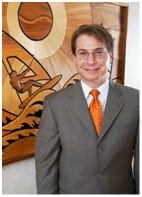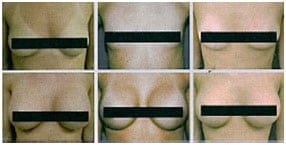Posted July 02, 2018 in
NuImage, Spring 2007
 After performing over a thousand breast enlargement surgeries since 1996, I have learned a few things that I would like to share with you. If you are considering breast enlargement, I hope that these principles will help guide you, as they have guided me.
After performing over a thousand breast enlargement surgeries since 1996, I have learned a few things that I would like to share with you. If you are considering breast enlargement, I hope that these principles will help guide you, as they have guided me.
There is no substitute for personal service.
As most of us already know, if you want something done right, you have to do it yourself. For me, this means performing my own consultations and preoperative visits, personally addressing all patient questions, performing the entire surgery myself, and seeing every breast enlargement patient at every postoperative visit. While it might be convenient to have O.R. technicians stitch up my incisions and medical assistants do my postoperative visits, I believe that performing these myself is simply the right thing to do. My surgery center only has one operating room because I only operate on one patient at a time.

Even though it’s cosmetic surgery, it’s still surgery.
There is no such thing as a risk-free surgery. But we can and do take active measures to make surgery as safe as possible. Our nationally-accredited ambulatory surgery center, the West Plano Plastic Surgery Center, is located on the campus of Presbyterian Hospital of Plano. All anesthesia is administered by physician anesthesiologists, not nurses or technicians. Our facility has an excellent track record for safety. And I don’t go home for the day until the last surgical patient is awake and stable to go home.
If you’re looking for art, go see an artist.
Surgeons routinely advertise that they will “sculpt” your breasts (or your nose or your thighs). But let’s face it: most surgeons have no experience in art or sculpture. In contrast, I have had the opportunity to create a large number of wood and marble sculptures over the past 25 years. Many of these pieces have been displayed in galleries or sold by commission. Placing a breast implant is not a sculptural masterpiece—it’s just placing an implant. But I sincerely believe that having an artistic eye has made me a better plastic surgeon.
Elective surgery should never be performed with a stopwatch.
Many surgeons perform breast enlargements in well under an hour. I take about two hours; I believe that it takes time to do it right. Most surgeons make the pockets for the implant via “blunt dissection,” which involves tearing tissues with a gloved finger or blunt instrument. I create the pockets with electrocautery, which involves heat-sealing the tissues to reduce bleeding and prevent bruising. This eliminates the need for postoperative drains, compression bras, and ACE wraps. I also use sample implants called sizers to preview your results on the O.R. table before selecting and placing the actual implants. This reduces guesswork and provides more predictable surgical results. These maneuvers add time to the surgery, but I look at it this way: it’s a couple of hours out of my life—but it’s the rest of yours.
Results matter, and they matter a lot.
No one looks perfect before surgery (otherwise why bother seeing me?)—and no one looks perfect afterwards. Although I can’t guarantee a perfect result, I sincerely promise that I will do everything in my power to get the best possible result. The most objective way to evaluate surgeons is to let the numbers speak for themselves. According to recent data submitted to the FDA, 26% of women undergoing breast enlargement required further surgery within 5 years. My 5-year re-operation rate is under 8%. To the extent possible, I try to keep my patients happy and my re-operations to a minimum. Because if you don’t look good after surgery, neither do I.

Don’t be afraid to shop around.
It’s your body. It’s your decision. It’s completely elective. Take your time. Make sure you’re comfortable with the plastic surgeon you choose. Look for a surgeon who:
- Is certified by the American Board of Plastic Surgery.
- Performs breast enlargement surgery at least once a week.
- Has privileges to perform breast enlargements at a local hospital.
- Has a large number of before-and-after photos available for you to view.
- Has post-op patients of your age and body type with whom you can speak.
- Takes the time to answer your questions competently and thoroughly.
- Has office staff who are friendly, attentive, and caring.
- Makes you feel that you are not just “another number.”
There are many highly qualified plastic surgeons in the DFW area. It is well worth the time and effort to find the one who is best for you.
Dr. Ronald M. Friedman has been recognized as a Best Plastic Surgeon in Dallas by D Magazine (2006) and Texas Monthly (2004, 2005 2006). He is the Former Chief of Plastic Surgery at Parkland Memorial Hospital in Dallas, and he currently serves as the Director of the West Plano Plastic Surgery Center on the campus of Presbyterian Hospital of Plano. Dr. Friedman graduated with Honors from Northwestern University Medical School in Chicago and completed his general surgery and plastic surgery training at the University of Texas Southwestern Medical Center. He has authored numerous journal articles and textbook chapters, has been featured on multiple television and radio broadcasts, and has lectured about plastic surgery on a national level. Dr. Friedman is the recipient of Awards from the Texas Society of Plastic Surgeons, American Society of Plastic Surgeons, and the American Society for Aesthetic Plastic Surgery. He specializes in cosmetic surgery of the breasts, body, and face.